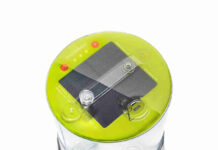
With a total ground floor area over 22,000 km2, 40% of all building roofs and 15% of all facades in EU 27 are suited for PV applications. This means that over 1,500 GWp of PV could technically be installed in Europe which would generate annually about 1,400TWh, representing 40% of the total electricity demand by 2020.
The European Photovoltaic Industry Association (EPIA), the world’s largest photovoltaic industry association together with Design-Build Solar, has organised yesterday, 23 June, an event on Building Integrated Photovoltaic (BIPV) systems, at the premises of the Ministry of housing in Madrid, in the framework of the “Solar Decathlon”. The event will count more than 170 participants representing mainly architects, installers, representatives from the renewable and construction industries. The speakers, coming from all around Europe, will address the latest technological and market trends within this sector as well as the economic and regulatory
frameworks in Spain and within the main European photovoltaic markets.
The integration of photovoltaic energy in buildings provides an enormous development potential for the PV industry as well as for the construction sector.
PV applications, apart from contributing to the generation of electricity and improving the passive energy behaviour of buildings, can replace conventional building components and also provide different functions such as, water tightening, weather protection, heat insulation, light modifications, etc.
“Spain has a unique opportunity to develop the BIPV market, which in addition to leveraging the decentralised nature of PV generation – energy generated by the citizen for the citizen -, would enable the stimulation of tens of thousands of jobs firmly anchored in the local economy, many of which in the construction industry”, said Virgilio Navarro, EPIA’s Vice-president and CEO of ATERSA.
Currently in some European countries the BIPV market is driven by specific support schemes, designed in such a way that BIPV systems are rewarded with a higher tariff per kWh generated than for Building Adapted PV (BAPV), where the PV modules are installed on top of the existing building structure and do not provide any additional function. This acknowledges the added effort and extra cost of integrating PV as part of the building envelope. It is in particular the case in France and Italy where BIPV already represents over one third of the annual market. In other countries such as Germany and Spain, where support schemes are not differentiated between both types of systems, BIPV only represents a very marginal share of the market (<1%) representing mainly niche applications where cost is not an issue.
“It is essential to put in place favourable conditions across Europe that will support a wide deployment of BIPV applications, which will have a major impact in the future development of buildings in Europe.
From 2012 onwards all Member States will need to adopt the recently approved Energy Performance of Building directive (EPBD) establishing that by 2020, all new building will need to be Nearly Zero Energy Buildings. Solar Photovoltaics, will be a key technology enabling to
reach such an ambitious and crucial objective” added Adel El Gammal, Secretary General of EPIA.
EPIA released last year its “SET For 2020 study”, showing that, provided specific boundary conditions are met, PV installed capacity could reach up to 390 GWp in Europe by 2020, representing 12% of the electricity demand by then.
Wide adoption of BIPV will allow seamless integration of high penetration of PV in urban environments and will be key to achieving such ambitious target.



